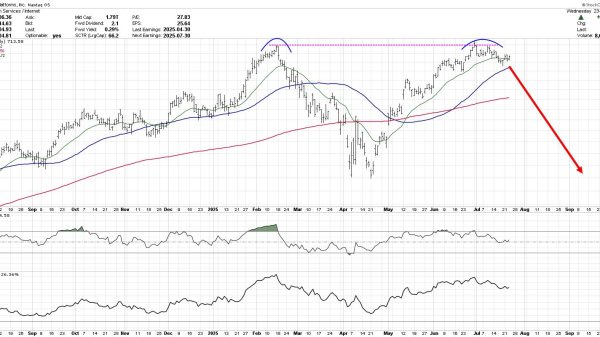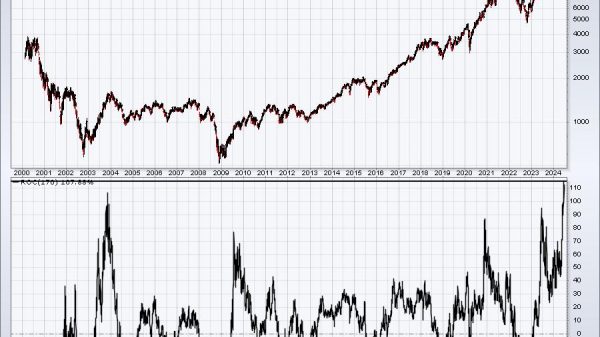The global market for satellite IoT connectivity and equipment is projected to grow at a CAGR of 26%, reaching $4.7 billion by 2030.
This is according to new research from IoT Analytics, a leading global provider of market insights for IoT. The findings, derived from the company’s latest Satellite IoT Market Report 2025–2030, show the market is expanding rapidly from its current 7.5 million global connections recorded in 2024.
Based on the research, IoT Analytics has published a public analysis of five key drivers propelling this market expansion.
Key findings
The number of satellite IoT connections reached 7.5 million in 2024, according to IoT Analytics’ Satellite IoT Market Report 2025–2030 (published June 2025). The market for satellite IoT connectivity and equipment is expected to grow at a 26% CAGR until 2030, surpassing $4.7 billion. 5 key drivers are poised to propel this growth: Technological advancements reducing costs: The satellite industry is shifting from heavy geostationary (GEO) satellites to cost-efficient low earth orbit (LEO) miniaturization. Standardized production and modular designs reduce satellite costs. Advancements in launching technology drive manageable costs. Satellite connectivity costs are falling due to smaller, scalable satellites. Providers implementing multi-orbit and hybrid network strategies Legacy SNOs adjusting connectivity strategies to sustain market leadership. Multi-orbit strategies optimize satellite connectivity for IoT applications. Collaboration between mobile network operators (MNOs) and SNOs drives hybrid satellite-terrestrial connectivity. Emergence of standardized connectivity protocols Legacy satellite module market share to significantly decline by 2030 as new standards rise. Legacy satellite operators are adopting new standards to stay competitive. IoT modules integrated with multiple connectivity options for flexibility. Governments investing in initiatives and mega-constellations Governments are the primary drivers of satellite infrastructure demand. Growing use of satellite connectivity in the automotive and transportation industries Transportation and logistics likely to dominate 3GPP NTN connectivity usage.Why it matters
For satellite IoT market players: The satellite IoT market is very dynamic, with new technologies and approaches disrupting legacy satellite operations. Vendors should invest in interoperability, hybrid networks, and standardized protocols to maintain competitive advantages and capture a wider range of IoT applications across industries.
For satellite IoT adopters: Connectivity costs are declining, and new approaches are enhancing satellite latency and reliability. Adopters should explore satellite IoT as a viable solution for remote, underserved applications while staying updated on the emerging technology landscape to ensure scalability and cost efficiency in their deployments.
Analyst takeaway: Key opportunities and challenges in the satellite IoT market
Satellite IoT is crucial in remote, underserved sectors. The satellite IoT ecosystem is moving from single to diverse technology. Standardized 3GPP satellite IoT connectivity will remain limited until the commercial model is finalized. Mega constellations challenge traditional satellite operators’ profitability and competitiveness.Analyst quotes
Knud Lasse Lueth, CEO at IoT Analytics, comments that: “7 million satellite IoT connections may look small next to 18 billion total IoT devices, but they solve the hardest problem in connectivity: Reaching the places where nothing else works. With falling launch costs, open standards and hybrid multi-orbit networks, it has become the final puzzle piece for truly ubiquitous, global connectivity, and we expect the segment to grow 20%+ annually over the next 5-10 years.”
Satyajit Sinha, Principal Analyst at IoT Analytics, adds that: “The satellite IoT market is evolving from proprietary, non-standardized systems—each tailored to a vendor’s own connectivity stack—toward a standardized, multi-technology landscape that includes 3GPP NB-NTN, NR-NTN, LoRaFHSS, and mioty. This shift is drawing in both traditional satellite providers and new players from the cellular and unlicensed LPWAN domains, who are adopting open standards to stay competitive. On the other end, Starlink is accelerating disruption by leveraging its capital scale and low-cost architecture to position itself as both a satellite backhaul provider and a direct IoT connectivity vendor. The result is a more competitive market—defined by open, hybrid architectures where interoperability, scale, and flexibility are now the key levers of success.”
Kalpesh Baviskar, Analyst at IoT Analytics, adds that “ROI is central—for both satellite operators and end-users. Historically, satellite IoT was limited by infrastructure and focused on high-margin sectors like maritime and aviation. Now, rising demand for broadband is driving major investments, but operators will prioritize consumer and enterprise markets first due to higher ARPU. As networks scale, some capacity will support IoT. The key question for users is whether the cost of satellite modules and subscriptions is justified by the value of the data. In high-impact use cases like remote monitoring, the ROI can make sense—but only if the economics align.”
The post Satellite IoT market projected to grow at a CAGR of 26%, reaching $4.7B by 2030 appeared first on IoT Business News.























